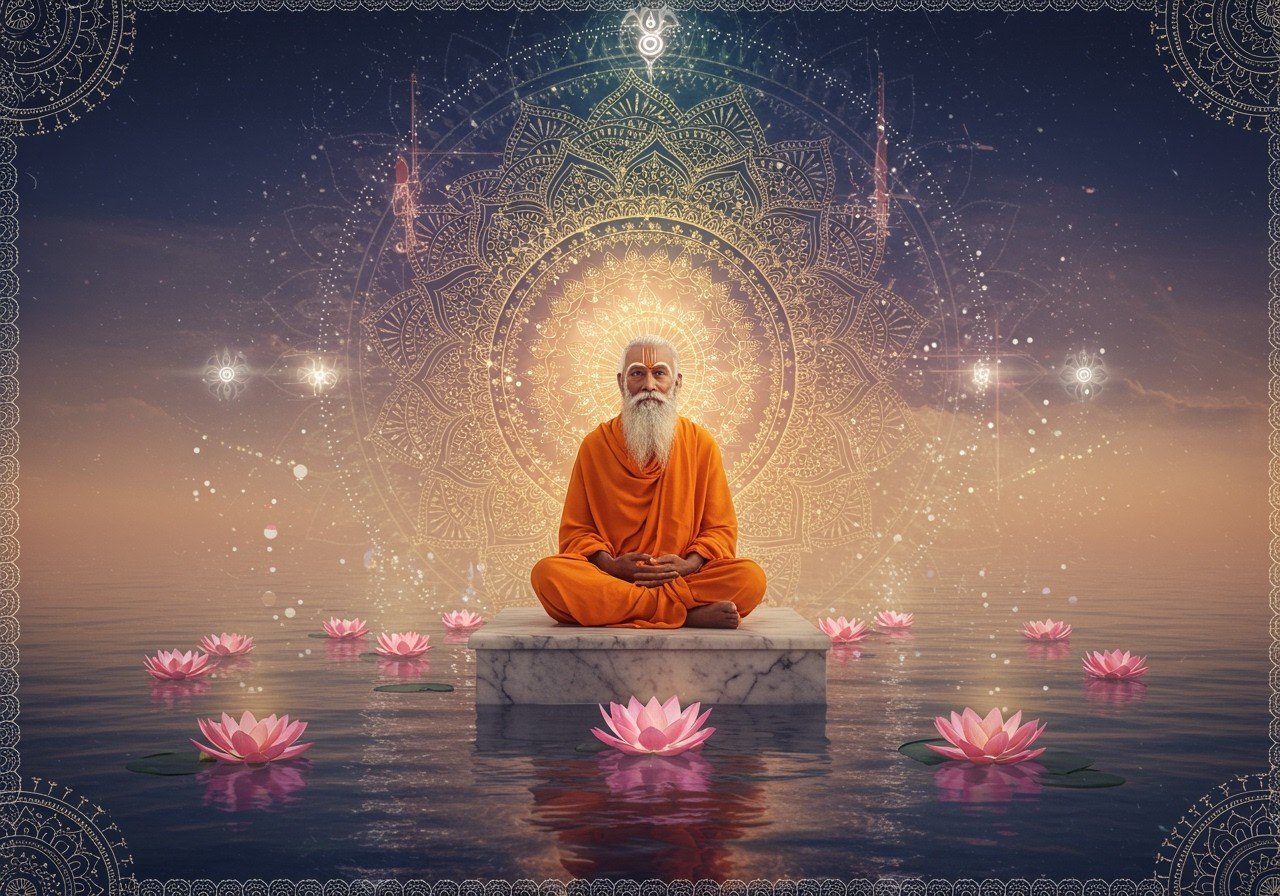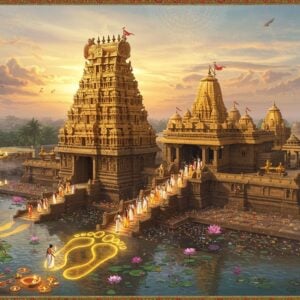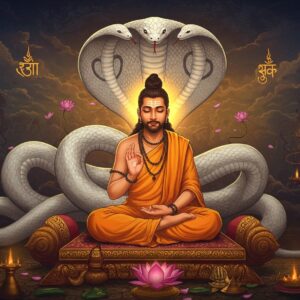
Gaudapada (c. 6th century CE), a prominent figure in early medieval Hindu philosophy, is revered as a key scholar of the Advaita Vedanta school. His magnum opus, the Kārikā (also known as the Māṇḍukya Kārikā or Āgama Śāstra), stands as the oldest surviving complete text on Advaita Vedanta, marking a significant milestone in Indian philosophical thought.
Gaudapada’s profound insights have left an enduring legacy, shaping the understanding of Advaita Vedanta for generations to come. He is not merely a historical figure but a guide for those seeking spiritual understanding and self-realization. His works offer a deep exploration into the nature of reality, consciousness, and the self, making him a cornerstone of Hindu philosophical tradition.
Key Aspects of Gaudapada’s Philosophy
Gaudapada’s philosophy is rich with intricate concepts that delve into the nature of reality and the self. These ideas continue to inspire and challenge spiritual seekers today. His unique blend of traditional Vedantic thought with possible influences from other schools of thought makes his work especially intriguing.
- Advaita (Non-dualism): Gaudapada is recognized as a foundational figure in Advaita philosophy. He interpreted Upanishadic teachings to solidify the concept of non-dualism within Indian philosophical thought, establishing a framework for understanding the ultimate reality as a unified whole. His contribution to the promulgation of Advaita Vedanta is undeniable, impacting generations of scholars and spiritual seekers.
- Ajātivāda (Non-origination): Central to Gaudapada’s teachings is the doctrine of Ajātivāda. This concept posits that the Absolute (Brahman) transcends birth, change, and death, existing as eternally unborn (aja). This challenges the conventional understanding of existence and invites a deeper exploration into the nature of reality. The empirical world, with its constant flux, is considered unreal in the absolute sense, a mere appearance of the unchanging Brahman.
- Maya (Illusion): Gaudapada characterizes the empirical world of appearances as Maya, signifying its illusory and transitory nature. He challenges us to see beyond the surface level of reality and delve into the deeper truth that lies beneath the ever-changing phenomena of the world. This concept has far-reaching implications for understanding the relationship between the self and the ultimate reality.
- Brahman and Atman (Self and Ultimate Reality): Gaudapada established the fundamental Advaita principle that Atman (the individual self) and Brahman (the ultimate reality) are ultimately one. He drew upon Upanishadic teachings to demonstrate that one’s own Atman is identical to the Atman in other beings, and all Atman are ultimately identical to Brahman. This profound concept has far-reaching implications for understanding the interconnectedness of all existence.
- Turiya (The Fourth State of Consciousness): Gaudapada introduces the concept of Turiya, the fourth state of consciousness, which transcends the ordinary states of waking, dreaming, and deep sleep. Turiya is characterized by non-duality, pervading all existence, unchanging, and free from sorrow (Dukkha). It represents the true nature of the Self, beyond the limitations of the ordinary mind. This concept offers a path toward self-realization.
- Asparsha-yoga (The Yoga of Non-contact): Gaudapada emphasizes the path of knowledge as Asparsha-yoga. This unique approach to spiritual practice emphasizes the importance of non-attachment and detachment from the duality of the world. It offers a method for realizing the ultimate truth through a deep understanding of the nature of reality.
Gaudapada’s Literary Contributions and Influences
Gaudapada’s philosophical foundation rests firmly on the Māṇḍūkya Upanishad. His Kārikā draws upon the wisdom of the Mandukya, Brihadaranyaka, and Chhandogya Upanishads, weaving together a tapestry of Vedantic thought. His verses (Karikas) on the Mandukya Upanishad delve into the nature of consciousness and Advaita philosophy, challenging conventional notions of reality. His argument against the distinction between dream and waking experiences, asserting their inherent identity, is a cornerstone of his thought. The exploration of the concept of turiya in *Mandukya Upanishad*, the fourth state of Self, provides a framework for understanding the nature of consciousness and its relationship to ultimate reality.
Scholarly discourse around Gaudapada’s work often notes the possible influence of Buddhism. Some suggest he may have been a “crypto-Buddhist,” integrating Buddhist concepts into his Advaita framework. According to Murti, Gaudapada’s Advaitic interpretation of Vedanta shows clear connections with Madhyamika and Yogacara doctrines, with evidence of direct quotation and engagement with these Buddhist schools of thought. This interplay of philosophical traditions highlights the rich intellectual exchange that characterized the period.
To further explore Hindu philosophy, you can delve into related topics like “Connecting with Your Inner Self: A Hindu Philosophy Guide” at https://www.poojn.in/post/18178/connecting-with-your-inner-self-a-hindu-philosophy-guide. Or, deepen your understanding of Hindu symbols with our guide on “Hindu Symbols Explained: Their Meanings and Importance” at https://www.poojn.in/post/14935/hindu-symbols-explained-their-meanings-and-importance-2.
Deepening Your Understanding: Explore Resources at Poojn.in
Poojn.in offers a curated selection of products to support your journey into the world of Hindu philosophy and spiritual practice. Enhance your studies with our range of sacred texts, study materials, and ritual items.
- Sacred Texts: Srimad Bhagavad Gita and other essential scriptures are available in various languages and editions.
- Study Guides: Explore commentaries and interpretations of philosophical texts to deepen your comprehension.
- Pooja Samagri: Enhance your spiritual practice with authentic Pooja Samagri, including items like incense, diyas, and more. For specific items like clay diyas, explore our Clay Items collection. Also, consider a Clay Doat for Saraswati Puja.
Visit www.poojn.in to discover our complete collection. We offer secure online ordering and pan-India delivery.


